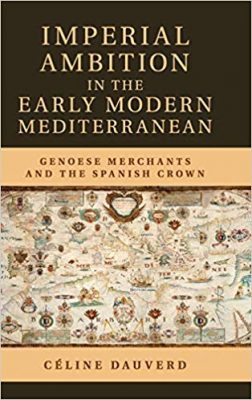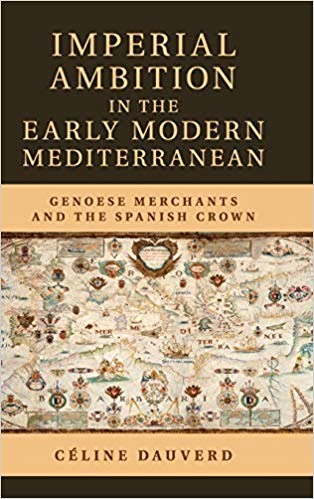 Author: Celine Dauverd
Author: Celine Dauverd
Publisher: Cambridge University Press – 299 pages
Book Review by: Sonu Chandiram
The Spanish Empire was one of the largest empires in history and a long-term one, spanning the late fifteenth to the early nineteenth century. Spain controlled not only parts of the Earth’s Western Hemisphere (known then as the New World) but also the Asian archipelago of the Philippines. This empire also included parts of Europe, Africa, and Oceania. It has been described by historians as the first global empire.
The Republic of Genoa was an independent state for almost eight centuries from 1005 to 1797, based in Liguria on the northwestern Italian coast, incorporating Corsica from 1347 to 1768, and numerous other territories in the Mediterranean. This republic began when Genoa became a self-governing commune within the Imperial Kingdom of Italy.
This book is about the interaction of people, particularly Genoese leaders, merchants and bankers, with the Spanish people and traders, and in particular with the Spanish Crown. They developed a symbiotic economic relationship for mutual benefit in the midst of threats and religious conflicts fomented by the Muslim Turks.
The Mediterranean region was the ‘central superhighway’ of trade, transport, and cultural exchange between the peoples of Western Asia, North Africa, and South Europe. But it also became an area of continual conflict between Christians and Muslims for about two centuries.
The author Celine Dauverd begins this book (and expounds on its central theme) by writing that in 1559, the Genoese ambassador in Madrid. Marcantonio Sauli addressed Spain’s King Philip II about their common interest in keeping the western Mediterranean territories Christian and Spanish. His message to the king was as follows:
In order to muster our fortunes together, we should make sure that in the winter we have many galleys that navigate the Mediterranean. To your twelve galleys more should be added so that they would provoke jealousy and disquiet in the Turks. This way they would think twice before coming to our waters and crushing the designs of His Majesty.
Dauverd spells out the topics covered and discussed in this book with this outline:
Introduction
- Empires of the Renaissance, 1453-1650: The Genoese Response to Shifting Alliances in the Mediterranean
- Genoese Emporium and Spanish Imperium in the Kingdom of Naples
- Commercial Ascension through Silk: Genoese Artisans, Merchants, Bankers
- Achieving Favorite Nation Status: The Economic Journey of the Genoese
- The Genoese Merchants: Between the Viceroy’s Buon Governo and Habsbrg Expansion
- Holy Week: The Genoese in the Ceremonial Triptych
- The Genoese Eye of the Storm: Spiritual Competition in Church, Sea and Grave
- The Genoese Participation in Charitable Institutions
Conclusion
The author points importantly: “The Turkish threat in the Mediterranean reinforced the commitment of both the Spanish Crown and the Genoese merchants to Christianity. Spain’s imperial strategy was reinforced by its willingness to acculturate to southern Italy through organized beneficence, representation at civic ceremonies, and spiritual guidance during religious holidays.”
The author takes a close look at how the interests of two peoples – some similar, and others different – were served. Among them were the following, as we quote here here:
- The Genoese depended upon Spanish imperial authority to protect their coastal trading posts, vital locations where commodities from the Levant were unloaded, making southern Italy a pivotal point in the Spanish imperium on the continent.
- Through trade, the Genoese colonies in the two kingdoms of Naples and Sicily generate revenues that allowed the Spanish Crown not only to feed the Spanish territories on the continent but also to sustain large armies in Europe and to combat frequent rebellions.
This is an excellent work on the detailed nuances of the mutually beneficial relationship between Genoese merchants and leaders on the one hand, and on the other, the advancement and spread of Christianity and prosperity by the Spanish Crown.
Author:
Celine Dauverd is Assistant Professor of History and a board member of the Mediterranean Studies Group at the University of Colorado in Boulder. Her research focuses on sociocultural relations between Spain and Italy during the early modern era (1450-1650). She has published articles and reviews in the Sixteenth Century Journal, the Journal of History, H-net, The Mediterranean Studies Journal, Speculum, I.B. Tauris Press, and the Societa Ligure di Storia Patria.







